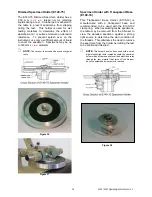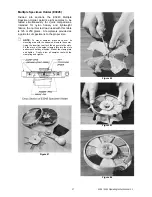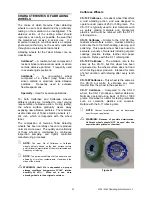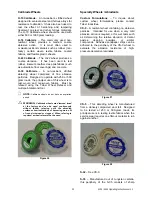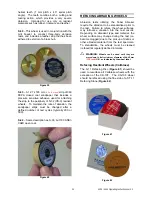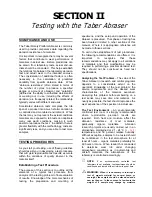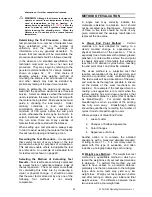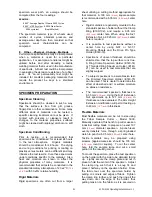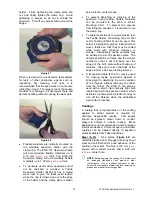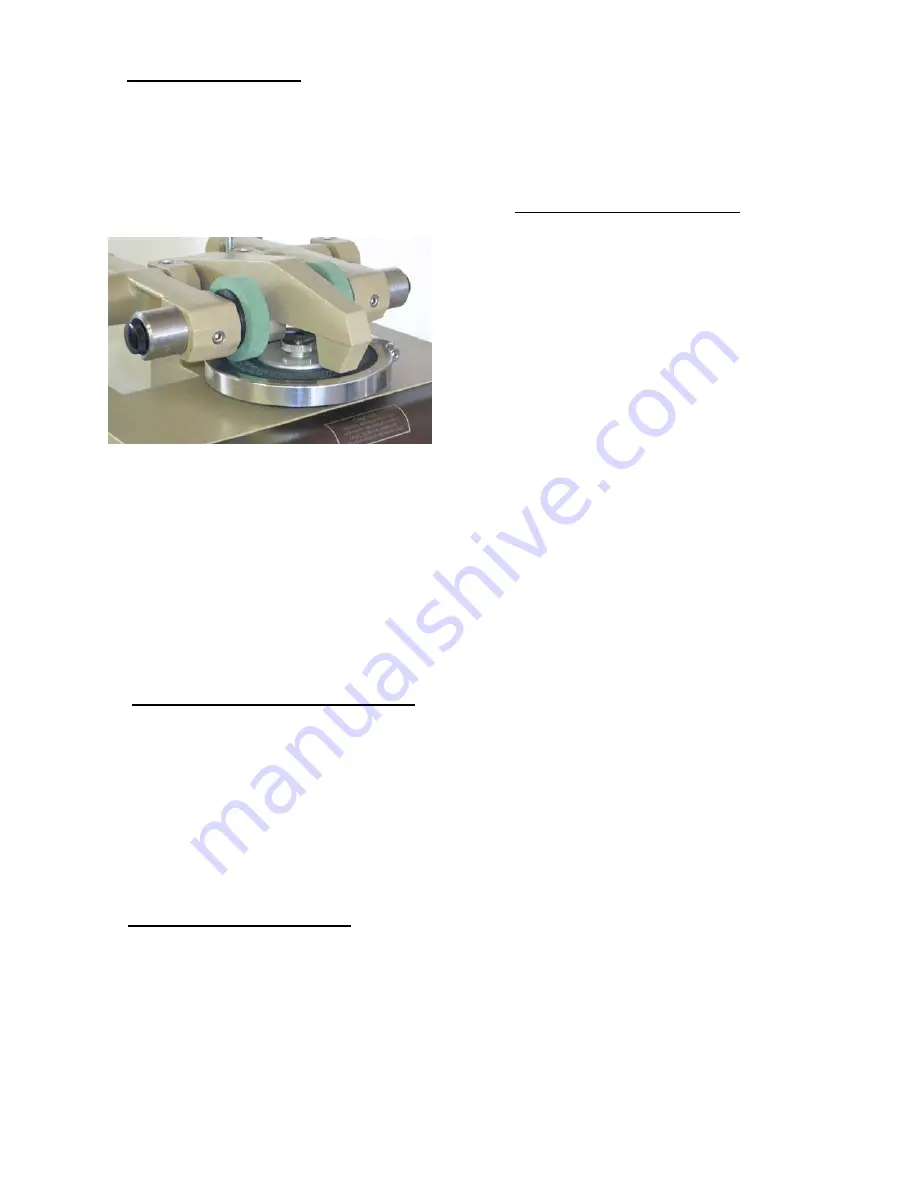
A. Breaking in New Wheels
– Calibrase wheels
are diamond trued before leaving the factory,
however their resilient composition makes them
subject to slight changes of form. Before a new
pair of Calibrase wheels is put into service, the
wheels must be given two refacings of 50 cycles
each. This will break in the wheels, and ensure
perfect contact of the abrading faces with the
specimen surface.
Figure 63
NOTE:
The S-11 Refacing Disc is used only once
(maximum of 50 cycles), therefore this initial refacing
of new wheels will require two (2) Refacing Discs.
NOTE:
The useful life of the ST-11 Refacing Disc is
10,000 cycles (approximately 400 refacings).
U
WARNING:
Never reface wheels with a used S-11
refacing disc. Unless new S-11 refacing discs are
used for each refacing, the wear coefficient of the
wheel faces may change and inject an error in the
test results.
B. Testing with Previously Used Wheels
–
Before each test, reface previously used wheels
25 or 50 cycles. Twenty-five cycles is sufficient
when the previous test was a short one on
similar test material. Fifty cycles is
recommended when the previous specimen was
of an unlike material or the test was of 1000
cycles or more.
NOTE:
Wheels that have not been used for a long
period of time may require two break-in refacings like
a new set of wheels.
C. Refacing Wheels During a Test
– Calibrase
wheels are designed to operate continuously
throughout the test without additional refacing.
However, there may be times when the wheel
faces tend to become clogged due to the
adhesive character of particles worn off the
specimen. Should this happen, re-standardize
the abrading surfaces by running them 25
cycles, then proceed with the test. Do not
confuse coloring of the wheels with “clogging” as
this is simply due to the wheel faces becoming
coated with fine abradings, a condition that must
be expected.
NOTE:
For most materials, it is usually not necessary
to reface wheels prior to 1,000 cycles of testing. In an
extreme case it may be necessary to reface the
wheels every 500 cycles.
D. Truing Out-of-Round Wheels
– It is
important that abrading wheels run true to obtain
accurate test results. Out-of-round wheels may
be detected by an up and down movement of
the abrading arm during testing. To reface
resilient Calibrase wheels when they become
worn out of round, follow the procedure for
refacing vitrified Calibrade wheels.
U
WARNING:
Truing Calibrase wheels on the
diamond refacer removes most of the abrasive
grain from the wheel faces. In order to re-
establish their normal abrasion coefficient, they
must be given two refacings of 50 cycles each
(follow the procedure for breaking in new wheels).
Procedure for Refacing Calibrase Wheels
•
Apply the wheels to the Abraser on the
corresponding quick-release mounting hub.
When facing the abraser, the right (left)
wheel will be mounted on the right (left)
abraser arm such that the wheel label is
facing inward towards the center of the
specimen table.
•
Mount an S-11 Refacing Disc (ST-11
Refacing Stone) on the E100-125 specimen
holder. To secure the S-11, use the clamp
plate and nut, and clamp ring. The clamp
plate and clamp ring are not required for the
ST-11 refacing stone.
•
Weight the abrading arm with the same load
weight that is to be used for testing.
•
Lower the abrading wheels onto the refacing
medium.
•
Lower the vacuum pick-up nozzle and adjust
its height to within 3.175 – 6.35 mm
(0.125 –
0.25 inch)
of the refacing disc. (See note
below for CS-10F wheels.)
•
If you are using a vacuum suction level less
than 100, program the appropriate value. It
is recommended that the vacuum level not
be less than 70 for wheel refacing.
•
Program the appropriate number of cycles
according to Table 1.
•
Using the S-12 Brush, frequently remove the
abradings by brushing the refacing medium
during the refacing operation. DO NOT
brush the wheels.
25
5135 / 5155 Operating Instructions ver 1.1






